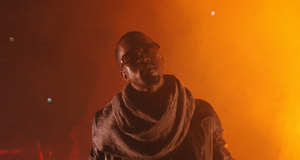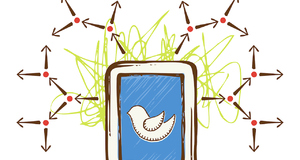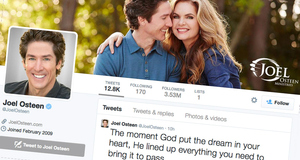From Elon Journal of Undergraduate Research in Communications VOL. 5 NO. 1Big Apple Kickoff vs. Tipoff: A Twitter Analysis
IN THIS ARTICLE
KEYWORDS
AbstractThis paper examined the different Twitter strategies used by each of two NFL and NBA teams. The study examined the New York Jets, New York Giants, New York Knicks, and the Brooklyn Nets to analyze the tweets these organizations posted starting one week prior to the opening regular season games―and during those games. Tweets were classified into one of six categories: engagement, information, team statistics, advertisements, player involvement, and promotion and advertisements. Results showed clear differences in Twitter strategies between the teams: The NBA teams posted about twice as many tweets as the NFL teams. The study also found that the two NBA teams implemented "best practices" in using tweets. IntroductionWithin the past few years, social media has become one of the leading tools used by organizations around the world to reach selected audiences. In particular, Twitter use has spread like wildfire from use by individuals, often for social purposes, to use by the largest corporations in the world to meet more strategic communicative goals. This includes sports organizations, including professional teams. Twitter provides such sports organizations with a new, accessible channel to release information and to engage consumers, also known as fans (Price, Farrington, & Hall, 2013). Using a new media form requires many considerations about appropriate methods, though, and sports organizations have endured various Twitter controversies that have occasionally overshadowed the positive influences of the social media form. More to the point, teams are no different than other organizations in discovering how to use Twitter to advance goals to serve and grow a fan base. Recognizing that not all teams or even professional sports are the same, this paper investigated the similarities and differences in the creation of a Twitter presence between teams in two professional sports: football and basketball. The analysis focused on two teams in the National Football League, the New York Giants and New York Jets; and another two in the National Basketball League, the New York Knicks and Brooklyn Nets. These four are all based in or around New York City, a huge media hub. Given that the area holds the target audiences for all of these teams, it allows for a reasonable examination of the social media strategies for each of these teams and for a contrast between two leagues. A goal of the paper is to determine which strategies appear to be more successful in engaging followers and building fan support networks. Twitter defines itself as “a real-time information network that connects you to the latest stories, ideas, opinions and news about what you find interesting” (Twitter 2013). Each user can create posts, more commonly known as "tweets." These are any combination of 140 characters that are published for the purpose of interacting with other Twitter users (Witkemper, Lim, & Waldburger 2012). Users can gain other Twitter followers. When they do indeed become so-called followers of specific Twitter accounts, users are choosing to allow tweets from them to appear on their Twitter homepage. All of the Twitter accounts examined here are the organizations’ official Twitter pages, not fraudulent or fan-produced accounts. Literature ReviewTwitter’s recent popularity has risen because it can have an equal effect in a large variety of categories of uses and users (Highfield, Harrington, & Bruns 2013). This, in turn, has led to a boom in social media research to study not only content but audience behavior. For example researchers can observe how Twitter is changing the event scene by watching members interact during a live event, called “live tweeting” (Highfield, Harrington, & Bruns 2013). Sports particularly offer opportunities for Twitter use, includ-ing live tweeting, because events serve as sources of entertainment, incorporating competition and human drama. Sporting events thus allow Twitter members to keep in touch―to interact―as well as express their feelings and opinions pertaining to action instantaneously (Highfield, Harrington, & Bruns 2013). Since sports are one of the most popular forms of entertainment, a notable number of research studies have recently sought to understand the process reaching fans via social media beyond Twitter. Some studies have explored sports marketing strategies and extended them to social media (Pronschinske, Groza, & Walker 2012). A study by Pronschinske, Groza, & Walker (2012) focused on the different variables that affect professional sports teams in the four largest professional leagues. Through surveys of college students, the authors recorded and indexed data by four different variables: authenticity, discloser, engagement, and information (Pronschinske, Groza, & Walker 2012). The study supported the researchers’ prediction that people were more likely to follow a more successful organization through social media. Noting the lack of available peer-reviewed research on Facebook use, the authors “tested the supposition that Facebook attributes can catalyze fan engagement with an online Facebook community” (229). Ultimately, they concluded that it was not enough to have a Facebook page, but the organization must be active in the social media community and create a social media plan to fully engage followers. Abeza, O’Reilly, and Reid (2013) conducted eight case studies that observed the social media strategies implemented by each sporting organization as they hosted events. The purpose of their studies was to find the uses, opportunities, and challenges that are presented by using social media accounts. After viewing the social media profiles and interviewing those in charge of the sites, they tested opportunities and challenges of social media (Abeza, O’Reilly, and Reid 2013). A study that identified motivations and constraints of Twitter use was conducted by Witkemper, Lim, and Waldburger (2012). This study is directly applied to specific athletes and sports organizations. The authors examined the motivations of sampled users according to subcategories: entertainment, information, pass time, and fanship (Witkemper, Lim, and Waldburger 2012). They wrote, “This examination suggests that sport organizations’ marketing efforts can impact their relationship with college students by increasing the motivations found in the study” (p. 179). The study suggests that sports organizations should cater to the four motivations listed above in their production of social media messages to gain more followers through specific strategies, such as providing insider information about a club or offering links to in-depth stories on athletes (Witkemper, Lim, and Waldburger, 2012). The authors suggest that organizations can use social media as a way to pick up ideas and news from their fans. This study hopes to develop similar suggestions that the teams in New York could implement, and that also coincide with the motivational cues from Witkemper, Lim, and Waldburger (2012). In his master’s thesis, Wysocki created a list of the best practices that sports teams—the NBA in particular—should use to maximize their social media success (2012). He compiled this list after performing in-terviews with nine social media professionals who worked in the NBA. The best practices include giving qual-ity content, incorporating social media offline, “gamify” social media efforts, personalize fans on social media, collect fan data, fansource/crowdsource, and use fans to amplify the NBA team’s message (Wysocki 2012). The author also suggests that teams allocate more money to hiring social media staff to regulate the flow of information in and out of the organization as well as keep up with several different social media platforms. Additionally, teams should spread their social media strategies not only onto the site but on posters, tickets, television airings, and other print materials (Wysocki 2012). The review of these previous studies established a foundation to learn more about professional sports teams’ social media use. This paper addressed the following research questions.
MethodsSampleTo properly compare tweets from different organizations, the data were collected during the same time period. Also the timing of promotions was considered essential to study the teams’ traditional marketing communications plans (Williams and Chinn, 2010). Since the NBA began its lengthy basketball season not long after the NFL season was initiated, it was possible to study Twitter activity during the crucial starts to both seasons in the fall of 2013. This yielded the chance to notice similarities and differences in Twitter techniques among the four teams. The author examined the Twitter pages for the New York Giants, New York Jets, New York Knicks, and the Brooklyn Nets one week prior to their home opening game of the season as well as the tweets issued live during the teams’ first games. By examining two teams in each league, he was able to make very limited generalizations but at the least seek some evidence of patterns in the leagues’ strategies that Pronschinske et al. (2012) found. The author chose the first week prior to the season opener under the assumption that if an organization were to implement a new social media strategy for a sports season, this key time period would be selected and would thus be a salient time for analysis. ProcedureThe first step in the protocol for carrying out the analysis was to find the official Twitter page of all four teams. These pages are indicated with a blue check mark to notify followers that the page has been approved by Twitter to be authentic. Both the Jets and Giants started their season on September 8, 2013, and both the Knicks and Nets began their season on October 30, 2013. These were less than two months apart. The author located the tweets exactly a week prior to both of these dates and the tweets during the first game . Each tweet counted as a unit of coding. He adopted several of the categories created by Pronschinske, Groza, & Walker (2012), which included engagement determined by the following six attributes: (1) listing of team events, (2) discussion board, (3) wall used for dialogue between the organization and fans, (4) creation of other applications (e.g., ticket and merchandise sales portals), (5) presence of an official email, and (6) other relevant contact information. Information dissemination (Information) was determined by the following four attributes: (1) news links from the organization, (2) notes from the organization, (3) photographs posted by the organization, and (4) videos uploaded by the organization. The author also created four categories: 1) game statistics determined by (a) updates of progress during the game (b) league standings supplied by the organization (3) player additions and releases; 2) advertisement determined by tweet mentioning another company outside the organization; 3) player involvement determined by (a) retweets of team players, (b) photos of players, (c) quotes by players or coaches or (d) behind the scenes photos of practice and locker 4)rooms; and promotional and advertisement determined by mention of another company with endorsement of upcoming game. Each tweet was analyzed and placed in these categories. FindingsThe analysis of tweets from the New York Jets, New York Giants, New York Knicks, and the Brooklyn Nets confirmed that there are strategies and information that each team implements. Each team issued many tweets under the Team Statistics, as shown in Figure 1. This is the category of tweets that were most similar among the four organizations. These posts included injury reports, starting lineups, and players that were released during the offseason. Each team provided updates periodically during the game as well as a final score Gupdate. A link was provided for the post-game wrap-up that was written by the organization’s staff. Direct quotations by coaches and players were often tweeted by these organizations regarding the position of the team and their personal thoughts. The author observed two different types of tweet advertising: retweets of sponsors and original tweets that mentioned sponsors. Every team promoted the stadium where its competition takes place. Also, some tweets were sponsored by different companies. Teams also shared official merchandise of their organization. The most tweeted about items were player jerseys. The New York Knicks incorporated their new jerseys into a kickoff social media plan called #KnicksInOrange. The majority of the Giants’ engagement tweets were used to promote their Big Blue Kickoff Live show that happened every day of the week leading up to opening night. Fans could ask questions using the #Giantschat or call questions for the hosts. The Giants also had more information tweets than the Jets. Of the 24 information tweets, 19 of those included links to the official news blog of the Giants organization. The links included stories written by the Giants staff and insiders. There were also photo galleries and videos from team practice. Another feature the Giants provided was photos within the team locker room. Lockers of standout players such as Eli Manning were pictured in efforts to prepare the fans for the game. It is obvious that the locker room tweets are supplied by the equipment managers based on the language used. For example, the members of the equipment team were mentioned in the tweets of the equipment set up. This was the majority of the player involvement tweets. The Jets incorporated more definite social media strategies in preparation for the season opener. The underlying theme was #JetsKickoff. Any tweet promoted the start of the season was accompanied by a graphic that advertised the #JetsKickoff rally that took place Friday, September 6, 2013. The idea was to "Paint the town Green" in an effort to get as many Jet fans as possible at these popular places in New York (see Figure 2). During the actual rally fan photos were tweeted. Along with #JetsKickoff was a countdown until the kickoff itself (see Figure 3). These tweets usually included an edited graphic of a player with the number of days left. However, these tweets were sponsored tweets. Companies, like Jack Black, are looking for ways to publicize their brand in an alternative way. Social media is a quick way to reach thousands of people. Established organizations, like the Jets or sports teams in general, already have an audience they are reaching. Purchasing an advertisement via Twitter is an easy way to lead viewers directly to their Twitter page with the @mention. Another strategy used was asking “Jetpardy” questions. These would be special graphics asking fans questions about Jets games from the past, and fans could respond via Twitter. The Jets team statistics category was compiled mostly of injury reports as well as player releases and acquirements (see Figure 4). Only 8 of the 35 tweets in this category were score updates. A photo of the official injury list was also posted by what fans were to assume was a coach. The two NFL teams had very similar information on their Twitter pages for their fans; however, it was the style of delivery that separated the two teams. The Jets used more graphics and pictures to draw in an audience, whereas the Giants stuck to simple text. Both teams incorporated a particular # to their preseason campaign. The Jets had more advertisement tweets, specifically sponsored tweets, than the Giants. The Brooklyn Nets experienced a transformation in the offseason, including a new coach and a highly publicized signing of three former Boston Celtics. However, the organization did not highlight the change, but concentrated on what was to be expected of the team and how the team was shaping up. A great deal of retweets were issued by NBA analysts and New York writers who mentioned the Nets. This brought positive attention to the Nets from outside their clubhouse. The Nets were clearly looking for outside sources to show people that the team is expected to have a successful season. While NBA on TNT panel had its preseason rundown, the Nets were tweeting direct quotes from the hosts on their predictions for the Nets as well as how players would do.Continued on Next Page » Suggested Reading from Inquiries Journal
Inquiries Journal provides undergraduate and graduate students around the world a platform for the wide dissemination of academic work over a range of core disciplines. Representing the work of students from hundreds of institutions around the globe, Inquiries Journal's large database of academic articles is completely free. Learn more | Blog | Submit Latest in Business & Communications |






















